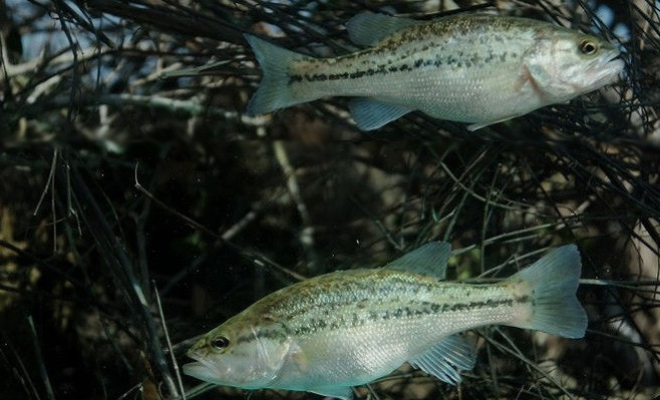We know firsthand that managing a pond can get a little overwhelming, and bass ponds might just be the most demanding. Check out our calendar at the link below (and feel free to download it yourself!) to help keep everything in check and your bass on their way to that trophy status. Tight lines, y’all!
Small Ponds, Big Dreams–What Gamefish Should You Choose?
We get it–huge, trophy-caliber bass is everyone’s dream gamefish to have in their pond. They put up a fantastic fight, taste great, and are the all-around classic gamefish for Texas ponds and lakes. But, there’s a catch. Largemouth Bass can be exceptionally difficult to manage correctly, especially in smaller ponds. They are voracious eaters and… Continue Reading
Hatchery Favorites–Fish Dishes!
In an effort to change up the regular blog post topics, we proudly present some staff-favorite recipes below! While we can all agree that catching the fish is the best part of owning a pond or lake, we think cooking up that catch is just as fun. Enjoy! Catfish Bake 1-2 fresh catfish fillets… Continue Reading
Fish Days– An Event You Don’t Want to Miss!
If you’ve ever visited our hatchery in the springtime, you may have heard us mention “Fish Days”. If that’s the case, you’ve also probably found yourself thinking, “What the heck are they talking about?” We hope this blog post will help shed some light on these special events! Fish Days are hosted marketing events… Continue Reading
Benefits of Supplemental Feeding with Pelleted Feeds
We all know that in a pond or lake environment, forage fish are the most crucial component for healthy game fish. Nothing can grow without food! While your live bait species (Fathead Minnows, Golden Shiners, Coppernose Bluegill, and Redear Sunfish) are the stars of the show, supplemental feeding with pellets is an effective way to… Continue Reading
The Best of Both Worlds—F-1 Largemouth Bass
Bass are the end-all, be-all of Texas freshwater sport fishing. They are voracious predators, put up relentless fights, and the big girls come with some serious bragging rights. There are many different strains of Largemouth Bass…but the best one is arguably the F-1 Largemouth. F-1 Largemouth Bass are a cross between a Northern… Continue Reading
Gypsum–What is it and how Does it Work?
Many pond and lake owners are troubled with muddy, murky, and all-around gross-looking water. You know the look—it’s dirty, it’s difficult to catch the fish you KNOW you stocked, and the kids don’t want to swim in it during the summer. Though murky water can have many causes, the primary reason for it is… Continue Reading
Triploid Grass Carp Application–A Step-by-Step Guide
If your pond or lake has ever been overrun with mossy, grassy vegetation, you have more than likely heard the word “grass carp” thrown around as a potential solution. Grass carp are sterile vegetarian fish that feed on vascular/mossy vegetation in ponds or lakes, keeping its growth in check and your water aesthetically pleasing. In… Continue Reading
Stocking in Winter–Is it Too Cold?
The new year brings with it happy memories of the recent holidays, ideas and goals for the future, and a new sense of self…and also cold weather! Here is your answer to the age-old question; is it too cold to stock my pond in January and February? Typically, the spring season gets… Continue Reading
Stocking Fish in the Summer Months
The Dog Days of Summer are officially here, and while we have plenty of air conditioning to keep us cool, our fish unfortunately do not! Hot summer weather brings with it an array of potential problems for pond owners, including pond turnover, vegetation growth, and today’s topic: the challenge of stocking more fish. With the… Continue Reading
